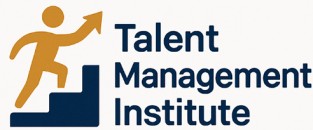
Understanding Talent Management
The Essence of Talent Management in Business Leadership
Talent management is a pivotal component of leadership development that focuses on recognizing and nurturing potential and existing leaders within an organization. It involves strategic efforts to recruit, develop, and retain top talent, aligning these efforts with the organizational goals to foster effective leadership.
In today's dynamic business environment, understanding talent management is crucial. Organizations that successfully implement robust talent management systems often see improvements in leadership development and enhance the capabilities of their leaders. Insightful leadership is not just about managing day-to-day activities; it's about embracing a comprehensive approach that nurtures future leaders and prepares them for inevitable challenges.
For those new to this concept, the exploration of key leadership topics in talent management provides a comprehensive guide to understanding the essentials needed to build a strong pipeline of business leaders. Building leadership requires a continuous cycle of learning and development.
Ultimately, the objective is to foster an environment where team members feel valued and are given opportunities to grow. This approach not only boosts morale but also translates to better performance and dedication within the team. Regular leadership newsletters and updates can be beneficial in keeping all parties informed and engaged.
For a more insightful perspective, subscribing to leadership insights and newsletters can equip both potential and existing leaders with practical advice to thrive in their roles. As we advance, further details about identifying leadership potential, developing competencies, and leveraging technology will be crucial.
Identifying Leadership Potential
Recognizing Future Leaders in Your Organization
Identifying leadership potential within your organization is pivotal to driving success and fostering a strong management team. Business leaders often focus on selecting individuals who exhibit intrinsic leadership qualities, which can be further developed through targeted leadership development programs and leadership newsletters. Recognizing those with potential impacts how teams function, ultimately improving business outcomes.
To effectively identify potential leaders, consider the following practical advice:
- Observe Behavioral Traits: Look for team members who demonstrate initiative, resilience, and the ability to inspire others. Effective leaders excel in these areas, influencing their peers positively.
- Assess Emotional Intelligence: Strong leaders possess high emotional intelligence, allowing them to handle interpersonal work relationships judiciously and empathetically. This awareness is vital for leadership development.
- Evaluate Problem-Solving Skills: Leadership development thrives on creativity. Identifying those who excel at analytical thinking and strategizing is essential.
- Value Feedback: Leaders in thought leadership seek and provide feedback actively. Encourage open communication within your teams to learn who excels in this area effectively.
Engaging in newsletters specifically targeting leadership advice can deliver consistent insights and help reinforce strategies in identifying these future leaders. Leadership newsletters can be an invaluable tool for those seeking insights into how to enhance leadership skills effectively.
By focusing on identifying potential leaders, organizations can create a leadership pipeline, ensuring that when needed, effective leaders are in place to guide teams toward success. For more in-depth insights into leadership identification and development, explore our guide to the top 5 leadership books you can't miss.
Developing Leadership Competencies
Building on Core Leadership Skills
To enhance leadership capabilities, it's crucial to focus on the development of core competencies that set the foundation for effective leaders. While talent management helps identify those with potential, nurturing these skills is key to elevating leadership performance. Core competencies such as communication, decision-making, and adaptability form the backbone of any successful leader. By consistently working on these skills, leaders can be better equipped to guide their teams and drive business success.
In the journey of leadership development, it's also beneficial to engage in continuous learning and seek practical advice from leadership March insights and other resources. For example, participating in leadership development programs and subscribing to relevant newsletters can keep leaders informed of the latest trends and strategies. Leaders can stay updated with thought leadership content, leadership newsletters or business reviews, to continuously refine their skills.
An effective approach is to integrate varied learning methods such as workshops, mentorship programs, and self-guided study to ensure well-rounded leadership growth. Engaging in transactions coordinator training, for example, offers hands-on exposure to leadership challenges and decision-making situations. Such experiences can be invaluable in developing a nuanced understanding of what it means to be an influential leader in the business world.
Remember, the process of developing leadership competencies is a continuous cycle that demands commitment and adaptability. Stay committed to learning, subscribe to insightful content, and engage with others. By doing so, leaders not only enhance their own skills but also inspire their team members to thrive in a supportive work environment.
Creating a Culture of Continuous Learning
Fostering an Environment of Continuous Improvement
Creating a culture of continuous learning is crucial for enhancing leadership skills within any organization. Business leaders who actively invest in their teams' development recognize that effective leadership is not static; it requires perpetual learning and adaptation. Encouraging a mindset of lifelong learning helps to cultivate adaptive leaders who are capable of navigating the ever-evolving business landscape. To achieve this, organizations should adopt the following strategies:- Encourage Knowledge Sharing: Promote the sharing of insights and experiences among team members. This can be facilitated through internal newsletters, forums, or regular team huddles where leadership lessons from different business scenarios are shared.
- Diverse Learning Opportunities: Provide access to a range of learning resources, such as workshops, seminars, and thought leadership articles. This not only enriches the team's knowledge but also strengthens their leadership competencies in a practical context.
- Feedback Mechanisms: Implement regular feedback sessions to help team members identify areas for improvement and celebrate their progress. Constructive feedback fosters an open learning culture and shapes effective leaders.
- Learning Incentives: Encourage participation by recognizing and rewarding efforts towards self-improvement and team development.
Leveraging Technology in Talent Management
Integrating Cutting-Edge Tools for Leadership Enhancement
In today's fast-paced world, leveraging technology is no longer optional in talent management; it's a necessity. Technology can significantly enhance the way leaders are groomed and developed within any organization. By integrating innovative tools, businesses can streamline and optimize processes, making leadership development more efficient.- Virtual Learning Platforms: With the rise of digital transformation, virtual learning platforms have become a mainstay. These platforms allow leaders and potential leaders to engage in continuous learning, regardless of their location. Weekly newsletters and insights provided by these platforms keep team members abreast of the latest leadership lessons and management day strategies.
- Data Analytics: Data plays a pivotal role in shaping effective leaders. Advanced analytics can help in identifying leadership trends and predicting future needs. By analyzing performance metrics, business leaders can offer practical advice and tailor leadership development programs specifically to the needs of each individual.
- Collaboration Tools: Tools like collaborative software and applications facilitate better communication among team members, allowing leaders to share their thoughts and insights freely. This fosters a culture of open dialogue and innovation, crucial for leadership development.
- Mobile Applications: Mobile apps dedicated to leadership training offer a flexible learning environment. They enable leaders to access leadership newsletters, participate in workshops, and receive insights and updates at their convenience, be it March, April, or December.
Measuring the Impact of Talent Management on Leadership
Assessing the Effectiveness of Talent Management Initiatives
In any organization, understanding the true impact of talent management on leadership is crucial. As leaders strive to improve their skills, measuring the effectiveness of these initiatives is essential to ensure alignment with business goals. To achieve this, several strategies can be employed:
- Define Key Performance Indicators (KPIs): Start by establishing clear KPIs that align with the organization's leadership development objectives. These metrics will help evaluate the progress of leaders and provide insights into areas that need further development.
- Regular Feedback Loops: Implement a system for regular feedback from team members and peers. Encouraging open communication in leadership development programs helps identify strengths and areas of improvement, fostering a culture of learning and growth.
- Employee Engagement Surveys: Conduct surveys to gauge the engagement and satisfaction levels of employees. Positive changes in these metrics often reflect effective leadership practices.
- Leadership Assessments: Utilize assessments to evaluate the capabilities and effectiveness of leaders. These tools offer valuable insights and can guide decision-making in talent management strategies.
- Continuous Improvement: Based on the data collected, make necessary adjustments to leadership development programs to ensure they remain relevant and effective.
Regular reviews and analysis are essential to maintain the momentum of leadership development. By understanding the impact of talent management efforts, business leaders can make informed decisions and provide practical advice for others. This, in turn, fosters a cycle of continuous improvement, enabling leaders to adapt to new challenges and insights discovered throughout the year.













